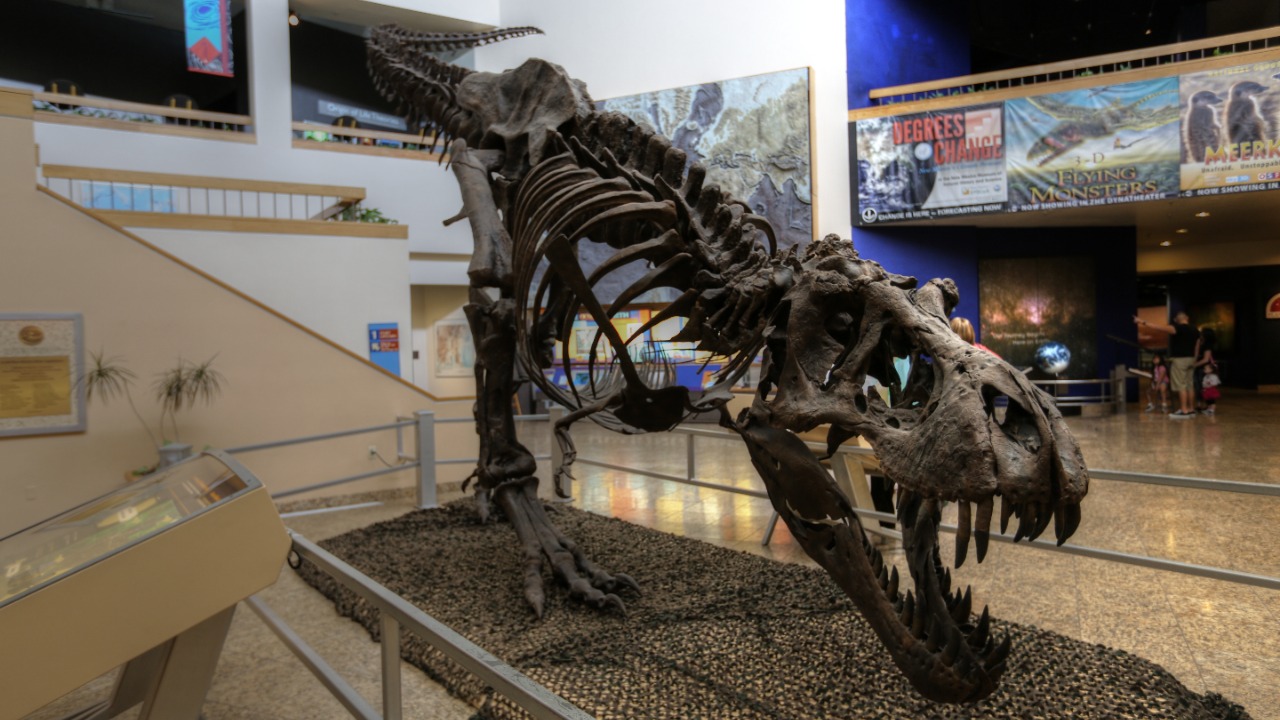
Recent fossil discoveries in New Mexico have provided compelling evidence that dinosaurs were thriving just before the asteroid impact that led to their extinction 66 million years ago. These fossils, found in a single rock layer, reveal a diverse and healthy dinosaur population, challenging the notion that dinosaurs were in decline before the catastrophic event. The findings, reported on October 23, 2025, highlight the abruptness of the extinction, suggesting that it was the asteroid impact, rather than a gradual decline, that led to the dinosaurs’ demise.
The Unearthing of the Fossils
The fossils were discovered in a geologically significant site in New Mexico, identified as a floodplain deposit from the late Cretaceous period. This location provided an ideal environment for preserving the remains, which were found in a concentrated bonebed. Paleontologists meticulously excavated the site, uncovering a variety of dinosaur bones that were remarkably well-preserved. The assemblage included intact skeletal elements, a rarity that offers a detailed snapshot of the ecosystem just before the extinction event.
The excavation process revealed a bonebed containing remains from multiple dinosaur species, all found together in a single layer. This concentration of fossils is uncommon and indicates that these dinosaurs lived in a thriving community. The exceptional preservation of these fossils, without signs of environmental stress, suggests that the dinosaurs were not experiencing the decline previously hypothesized by some scientists. This discovery provides a unique opportunity to study the health and diversity of dinosaur populations just before their extinction.
Insights into Dinosaur Health and Diversity
The fossils from New Mexico offer valuable insights into the health and diversity of dinosaur populations at the time. Analysis of the bones showed no signs of nutritional deficiencies or injuries that would indicate hardship. Instead, the bones displayed robust growth patterns, typical of healthy and thriving populations. This evidence contradicts earlier theories that suggested dinosaurs were struggling to survive before the asteroid impact.
The variety of species represented in the fossil assemblage includes hadrosaurs and ceratopsians, among others. These species coexisted in the same ecosystem, indicating a lack of competitive exclusion. Such diversity suggests that dinosaurs were well-adapted to their environment and capable of sustaining healthy populations. Isotopic analysis of the bones further confirmed a stable diet and habitat, reinforcing the idea that dinosaurs were thriving before the asteroid struck.
The Timing Relative to the Asteroid Impact
The stratigraphic position of the fossil layer is directly beneath the iridium-rich boundary that marks the asteroid’s arrival 66 million years ago. This proximity in time to the Chicxulub impact site in Mexico provides a clear timeline for the extinction event. The fossil bed’s position supports the theory that the asteroid impact was the primary cause of the dinosaurs’ sudden extinction, rather than a gradual decline due to other factors.
Comparing the New Mexico fossil bed to global records, it becomes evident that the extinction event was abrupt and catastrophic. The absence of decline signals in these specimens contrasts with earlier theories that volcanic or climatic stressors were weakening dinosaur populations before the impact. This new evidence shifts the focus back to the asteroid as the sole catastrophic cause of the extinction, challenging previous assumptions about the dinosaurs’ pre-impact condition.
Implications for Extinction Narratives
This discovery has significant implications for extinction narratives, emphasizing the asteroid’s role as the primary cause of the dinosaurs’ demise. The fossils indicate that dinosaurs were at their peak vitality just before the impact, refuting theories of a long-term decline. This finding prompts a reevaluation of the role of other potential factors, such as the Deccan Traps eruptions, which the New Mexico evidence suggests had minimal pre-impact effects on local faunas.
The implications of this discovery extend beyond the specific site in New Mexico. It raises questions about whether similar patterns of thriving dinosaur populations existed worldwide before the asteroid impact. Future research could focus on uncovering similar bonebeds in other regions to determine if this “doing just fine” pattern was a global phenomenon. Such studies could further refine our understanding of the events leading up to the dinosaurs’ extinction and the factors that contributed to their sudden disappearance.
In conclusion, the rare fossils unearthed in New Mexico provide a new perspective on the state of dinosaur populations before the asteroid impact. By challenging previous assumptions of decline, these findings underscore the suddenness of the extinction event and highlight the need for further research to explore the global implications of this discovery. As paleontologists continue to investigate, the narrative of dinosaur extinction may continue to evolve, offering deeper insights into one of Earth’s most dramatic events.
More from MorningOverview